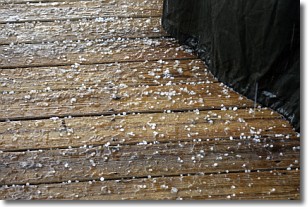Weather Alert in Minnesota
Air Quality Alert issued May 12 at 11:56PM CDT by NWS Duluth MN
AREAS AFFECTED: North St. Louis; Northern Cook/Northern Lake; Central St. Louis
DESCRIPTION: * WHAT...The Minnesota Pollution Control Agency has issued an Air Quality Alert for fine particle pollution. The Air Quality Index (AQI) is expected to reach the Orange or Unhealthy for Sensitive Groups category. * WHERE...Portions of northeast Minnesota including northern St. Louis, central St. Louis, and Inland Lake and Cook counties. The areas most likely to experience smoke impacts include Brimson, Isabella, Babbitt, Ely, and portions of the Boundary Waters Canoe Area Wilderness. * WHEN...Through 3 PM CDT Tuesday. * IMPACTS...Sensitive groups, such as people with lung disease (including asthma), heart disease, and children and older adults, may experience health effects. * ADDITIONAL DETAILS...The Camp House Fire, Jenkins Creek Fire, and Munger Shaw Fire are ongoing across northeastern Minnesota. Crews are responding with full suppression using ground resources and aircraft. Gusty southerly winds will become more southeasterly Tuesday. This will transport the smoke plume north and northeast from the ongoing fires. Smoke will continue to impact areas near and downwind of the fires. Smoke from these fires has been observed as far north as the Canadian Border.
INSTRUCTION: Sensitive groups, such as people with lung disease (including asthma), heart disease, and children and older adults, should limit prolonged or heavy exertion. Follow all safety instructions from local emergency management officials. Evacuation orders issued for St. Louis County can be found at https://sheriff-slcgis.hub.arcgis.com/pages/wildfire For information on current air quality conditions in your area and to sign up for daily air quality forecasts and alert notifications by email, text message, phone, or the Minnesota Air mobile app, visit https://www.pca.state.mn.us/air/current-air- quality. You can find additional information about health and air quality at https://www.pca.state.mn.us/air/why-you-should-care- air-quality-and-health
Want more detail? Get the Complete 7 Day and Night Detailed Forecast!
Current U.S. National Radar--Current
The Current National Weather Radar is shown below with a UTC Time (subtract 5 hours from UTC to get Eastern Time).

National Weather Forecast--Current
The Current National Weather Forecast and National Weather Map are shown below.

National Weather Forecast for Tomorrow
Tomorrow National Weather Forecast and Tomorrow National Weather Map are show below.

North America Water Vapor (Moisture)
This map shows recent moisture content over North America. Bright and colored areas show high moisture (ie, clouds); brown indicates very little moisture present; black indicates no moisture.

Weather Topic: What is Rain?
Home - Education - Precipitation - Rain
 Next Topic: Shelf Clouds
Next Topic: Shelf Clouds
Precipitation in the form of water droplets is called rain.
Rain generally has a tendency to fall with less intensity over a greater period
of time, and when rainfall is more severe it is usually less sustained.
Rain is the most common form of precipitation and happens with greater frequency
depending on the season and regional influences. Cities have been shown to have
an observable effect on rainfall, due to an effect called the urban heat island.
Compared to upwind, monthly rainfall between twenty and forty miles downwind of
cities is 30% greater.
Next Topic: Shelf Clouds
Weather Topic: What is Sleet?
Home - Education - Precipitation - Sleet
 Next Topic: Snow
Next Topic: Snow
Sleet is a form of precipitation in which small ice pellets are the primary
components. These ice pellets are smaller and more translucent than hailstones,
and harder than graupel. Sleet is caused by specific atmospheric conditions and
therefore typically doesn't last for extended periods of time.
The condition which leads to sleet formation requires a warmer body of air to be
wedged in between two sub-freezing bodies of air. When snow falls through a warmer
layer of air it melts, and as it falls through the next sub-freezing body of air
it freezes again, forming ice pellets known as sleet. In some cases, water
droplets don't have time to freeze before reaching the surface and the result is
freezing rain.
Next Topic: Snow
Current conditions powered by WeatherAPI.com




